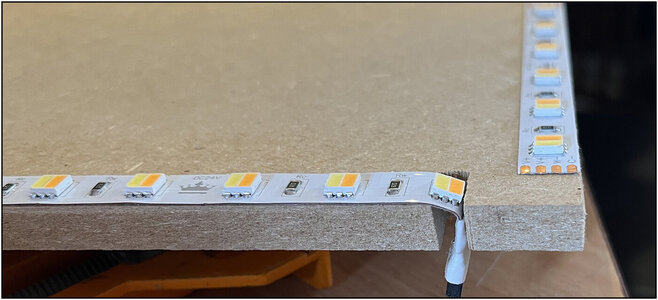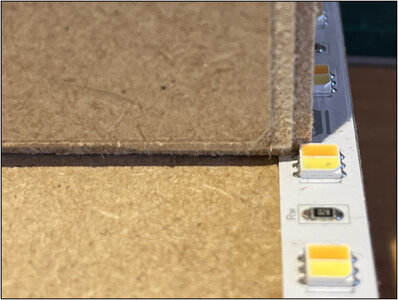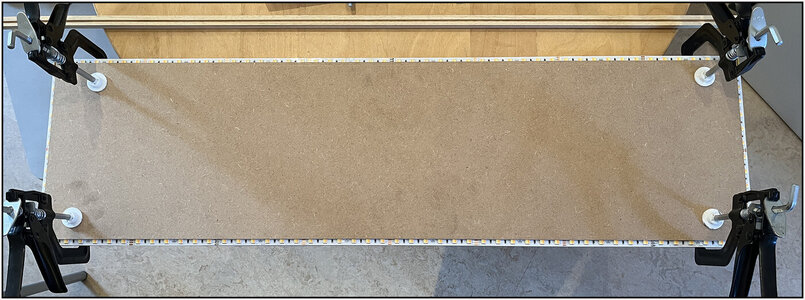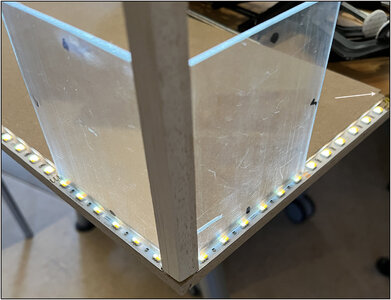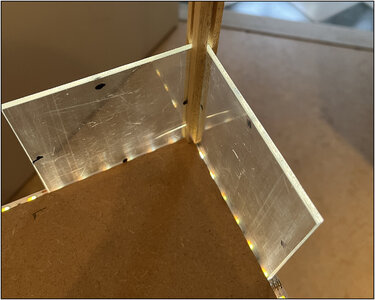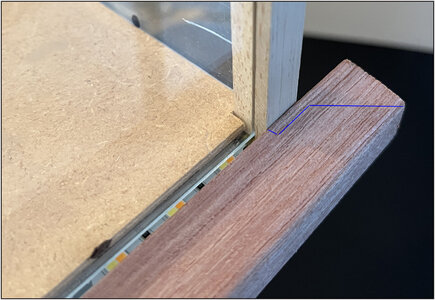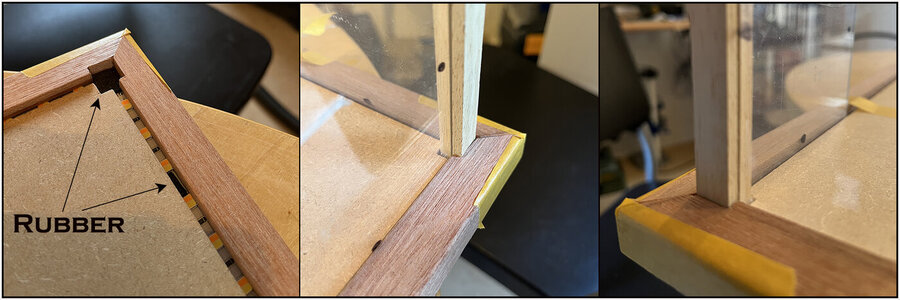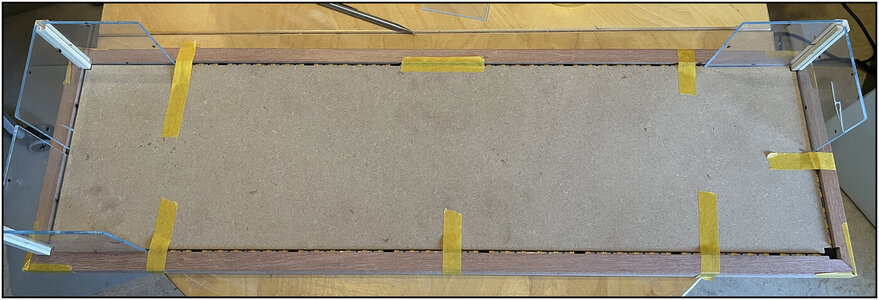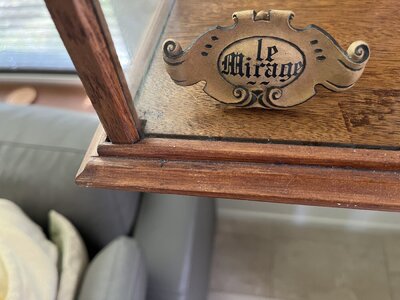Finally able to do something about the display case again.
Saw the bottom plate of 8 mm thickness and the inner plate of 6 mm thickness to size.
Degreased the edges of the inner plate and glued the LED strips along the edge:
View attachment 375587
The strips are provided with double-sided tape, so you only have to remove the cover strip.
At the left a recess has been made for the connection of the battery from below:
View attachment 375588
Then I can also have the outside profile tightly connected to the plate.
Saw 2 recesses on the edges of the inner plate so that the plate partly falls over the LED strip:
View attachment 375589
I will have to get a 3.5 mm slot on the LEDs to allow the glass to collapse.
The inner plate is temporarily fixed to the bottom plate to mark the recesses for the glazing bars:
View attachment 375590
The inner plate is 7 mm narrower on all sides than the bottom plate. Why........ that will become clear later.
Then the glass bar connects to the outside of the bottom plate:
View attachment 375591
Right at the arrow 1 of the cut-out corners.
The glass then connects to the inside of the inner plate:
View attachment 375592
The inner corner of the glazing bar therefore falls slightly within the inner plate.
Now you can also see why I provide the display case with glass. Through the shaving light from below, you will soon see everything in terms of scratches, dust, greasy fingers, etc.
Also bought a corner profile that comes around the bottom plate on the outside:
View attachment 375593
I now have to saw it all around so that it falls party over the LED’s and 3.5 mm in between the glazing bars. And on the corners of the glass slats in miter. See the blue lines.
In the end I get that a 3.5 mm slot for the glass.
The inner and bottom plate are together 14 mm thick. This profile is 17 mm high. Which will soon be slightly higher above the inner plate. The inside will be white, so that it will hopefully reflect a little more light at an angle.
I make the slot for the glasses 3,5 mm. The glass will be 3 mm thick. Then I have some room for the glass in the slot, because the intention is that I can remove the glass with the glazing bars from the bottom plate. Because I have to be able to secure the Bluenose with the top on the 4 brass uprights for transport. Because in the car with all lateral forces while driving, it cannot cope in its 'Pull-Apart' construction. And putting her together and taking her apart every time is also not an option.
I will continue with sawing corners and mitres.
Regards, Peter







